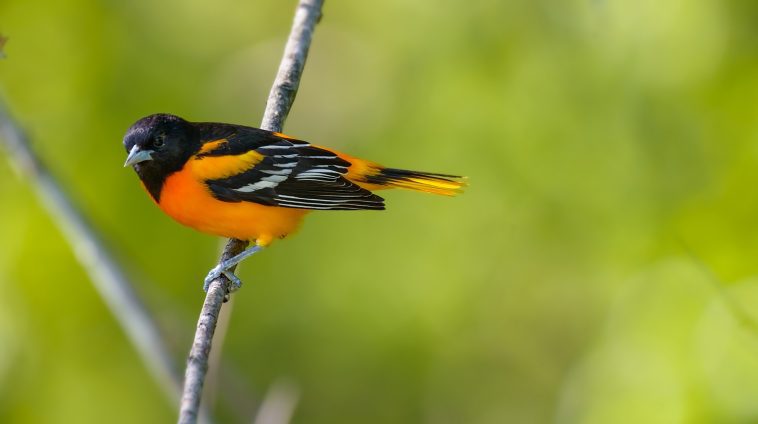[Originally published as Hybrid Zones]
The primary understanding of what a species is comes either directly or indirectly through the late Ernst Mayr. Mayr, a long-tenured professor at Harvard University, was an ornithologist and one of the greatest biologists of the 20th century. One of Mayr’s most well-known works was a massive tome written on the subject of speciation. Mayr’s thoughts on what a species is and how species form have guided much of the research on speciation since, and his definition is the one presented in the vast majority of science textbooks, even in creationist circles.
Mayr’s definition of species, drawn from his interesting book, Animal Species and their Evolution, runs as follows:
Species are groups of actually or potentially interbreeding natural populations, which are reproductively isolated from other such groups.
Mayr believed that the genomes of species were highly adapted blocks, fitted for their environments by the process of evolution. As such, crossing between these blocks would lower overall fitness and result in a weakened organism that would be unlikely to survive and reproduce.
Mayr was aware, however, that many species whose ranges overlapped produced hybrids where they met. These were referred to as hybrid zones. Mayr wrote about these zones but largely regarded them as either one species extending its range at the expense of another or as a result of two previously separated species rejoining along a narrow strip of land. He and his disciples did not believe that such events would have significant effects on populations.
Hybrid zones however remain a common feature in the peer-reviewed literature, including in some recent papers worth discussing.
The first deals with a well-known hybrid zone between Baltimore (Icterus galbula) and Bullock’s (Icterus bullockii) orioles. This hybrid zone has been known and studied for some time. In the most recent paper, researchers looked at Museum specimens and compared them to living members of each species. They found that Bullock’s orioles had gotten significantly brighter in their orange plumage over the years. Their explanation for this color change, which is likely the true one, is that there had been introgression from the Baltimore Oriole population (Rohwer et al, 2022). However, ranges have largely been stable.
A similar article on chickadee species found that the plumage of the hybrids of two chickadee species was intermediate. However, the study showed that Carolina Chickadees (Poecile carolinensis) are expanding their range north and introgressing heavily on the black-capped chickadee (P. atricapillus) population. At one study site, only hybrids were banded (Suthers and Magee, 2022). This is interesting because it appears as if this particular study follows Mayr’s expectations. P. carolinensis is expanding at the expense of P. atricapillus.
Another recent article, this one in nightingales, found that hybrids did backcross into the paternal populations. However, hybrids occurred infrequently, and only a small percentage of individuals in the population had hybrid ancestry (Reifova et al, 2022). This too seems to fit with Mayr’s ideas about speciation. Hybrids are rare and not successful in general. The two species in question are believed to have diverged recently and thus should be readily able to hybridize, yet hybridization is limited.
What can we take away from these examples?
The second and third seem to support Mayr’s ideas. The first indicates that there has been extensive crossbreeding between the two species. This would seem to conflict with Mayr as there is clear gene flow from the Baltimore to Bullock’s orioles but the ranges have remained constant. This type of gene flow during or post-speciation is not unheard of. A recent paper on cave salamanders found that there is constant gene flow between two distinct species, despite long-term hybrid lineages not being found (Grant et al, 2022). It would seem then that Mayr’s ideas about speciation are only partially true.
None of the above is earth-shattering news or should be perceived as criticism of Mayr. Mayr was one of the few scientists who, at least at one point, realized that creation and speciation were compatible. He was an incredibly gifted scientist. However, on this point, it would be wise for creation biologists to depart from Mayr.
Biology is a complicated field and the more I study it, the more convinced I am that there are few, if any, general rules. Almost everything has multiple exceptions and concepts of species are no exception. I think hybrid zones serve as good evidence that species are non-essential to modeling the natural world. Creationists should think about moving away from the concept entirely. I’ve argued previously that species are not real. Now I think creationists should consider just dropping the concept entirely and concerning ourselves with the breeds within a kind.
References:
Grant, E.H.C., Mulder, K.P., Brand, A.B., Chambers, D.B., Wynn, A.H., Capshaw, G., Niemiller, M.L., Phillips, J.G., Jacobs, J.F., Kutcha, S.R., and R.C. Bell. 2022. Speciation with gene fow in a narrow endemic West Virginia cave salamander (Gyrinophilus subterraneus). Conservation Genetics, 23: 727-744, https://digitalcommons.unl.edu/cgi/viewcontent.cgi?article=2232&context=usgsstaffpub
Reifova, R., Sottas, C., Reif, R., Pialek, L., Poignent, M., Kverek, P., and P.T. Dolata. 2022. Patterns of hybridization in a secondary contact zone between two passerine species, the common nightingale Luscinia megarhynchos and the thrush nightingale Luscinia luscinia. Journal of Avian Biology, e03061, https://onlinelibrary.wiley.com/doi/pdf/10.1111/jav.03061
Rohwer, V.G., Suh, Y.H., and R.A. Ligon. 2022. Revisiting the Baltimore–Bullock’s Oriole hybrid zone reveals changing plumage colour in Bullock’s Orioles. Royal Society Open Science, 9, https://royalsocietypublishing.org/doi/pdf/10.1098/rsos.221211
Suthers, H.B. and C.S Magee. 2022. Black-capped Chickadee X Carolina Chickadee Hybridization in the Hopewell Sourlands, Central New Jersey. North American Bird Bander, 101-113. https://easternbirdbanding.org/wp-content/uploads/2022/12/101-BCCH-x-CACH-Hybridization.pdf







